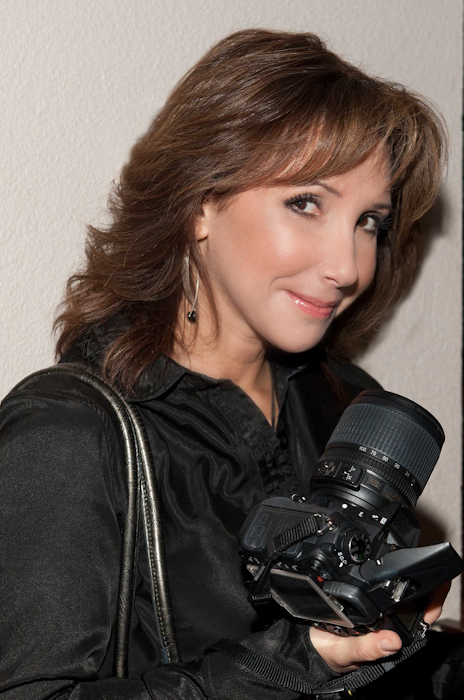Daily Herald: Dangerous Perceptions
Myth: It’s a disease of the vain and the rich who have too much of everything and so can afford to starve themselves on purpose.
Myth: It’s a privilege of excesses offered to those living in a first-world nation.
Myth: It’s a woman-thing.
Fact: “People erroneously believe that whether a person is starving themselves, binging and purging, or over-eating that they engage in these activities because of ego or lack of discipline. They don’t realize that these are ways of ways of handling emotional difficulties,” said Vivian Hanson Meehan, RN, President and founder of the National Association of Anorexia Nervosa and Associated Disorders (ANAD), the oldest national non-profit organization of its kind.
“One of the more constant responses when people are told about Anorexia Nervosa is ‘Oh I wish I could have that for a week,’” said Meehan. “This comes under the same category as ‘Be careful what you wish for’.” The reason, she explains, is that the disease is insidious in that it penetrates and infects a victim’s belief system and, for some people, becomes a thoroughly unshakable condition.
“It’s a serious complex disease that involves a psychological disorder called ‘Body Dysmorphic Disorder (BDD) where an individual perceives themselves as being obese when in reality they are grossly underweight,” says Annie Hayashi, ANAD Director of Communications.
For the person who is Bulimic, said Meehan, it becomes a life of guilt. “Someone who is Bulimic believes that they are a terrible person for doing this but they crave the relief they feel after binging and purging, even if it’s only for five minutes. Similarly, the compulsive eater vows ‘not to do that anymore’ but, when faced with things in their life that they feel they can not alter, they eat which somehow calms them,” she explains.
Far from marginalizing the victims, eating disorders, commonly referred to as “ED”, actually traverse all boarders of sex, race and means affecting men as well as women, Latinos, African Americans, Asians and Native Americans in addition to Caucasians. While women do outnumber the men seven to one, there are currently one million men afflicted with ED nationwide.
In 2004 ANAD did a study of the callers to their hotline and found that 67% described themselves as middle to lower-middle class. It is getting easier to correctly evaluate the breadth of ED because, “Doctors are now getting better at diagnosing those illnesses and previously silent communities, such as the Latino and Asian communities, where there is a lot of face-saving, are now more willing to come out and talk about it,” said Hayashi.
Hayashi points out again and again that, “An eating disorder is not about food. For people who feel their lives are very much out of control, food intake is the one thing that any human being can control; how much, when, etc.”
Given this, every new measure of the effects of the disease such as every pound lost, every newly visible bone, every successful purge is then viewed as that next level of control over one’s will in having achieved that end. “Control and success,” adds Hayashi.
According to ANAD, now ushering in its 30th year in operation, 86 percent of the victims report the onset of their illness by age 20, and a terrifying10 percent by age 10 or younger. Six percent of the victims die.
“It probably will be impossible to ever get the exact statistic of how many people die of eating disorders because that’s not what they put on death certificates,” laments Chris Athas, ANAD vice president.
Both Athas and Meehan point to the example of Karen Carpenter, one half of a famous 60’s brother and sister singing duo, whose battle with Anorexia Nervosa was well-documented. Carpenter was hospitalized then released into continued therapy. Unfortunately her therapist was unaware that she had begun secretly to drink Ipecac serum, a substance used to induce vomiting in cases of accidental poisoning.
California was one of only two states that performed a test for Ipecac when they did an autopsy. Carpenter’s autopsy diagnosis was ‘Emetine Cardio Toxicity’, Emetine being the prime ingredient in Ipecac.
As part of their commitment to education and prevention, ANAD has initiated campaigns against the sale of over-the-counter diet products to adolescents, working directly with pharmacies and manufacturers. In addition, they actively monitor advertisers and other forms of media in an effort to help to eliminate dangerous and erroneous messages like “You can never be too rich or too thin.”
Darcy Gans, ANAD Communication Manager says, “The good news is that ED is a disease you can recover from. Help is available and not always costly. All of our support groups are completely free of charge.”
Chief on ANAD’s radar currently are the websites that promote the ED lifestyle. Called “Pro-Ana” and “Pro-Mia” for their support of Anorexia and Bulimia, the sites began cropping up between 5-6 years ago with the proliferation and ease of creating personal websites and blogs.
“They are extremely disturbing,” said Christy Reh, 21, of Lincoln Park, an intern at ANAD and a self-described ‘survivor’ of Anorexia Nervosa. “They glorify the disease, describe it as a valid lifestyle and even give tips on things like how to purge or hide the symptoms from loved ones.”
Reh struggled with Anorexia Nervosa for 10 years, the illness having taken hold of her at the tender age of 11. By the time she entered recovery six years later, the slight 5’0” tall high school sophomore weighed just 60 lbs.
“It has been my passion to reach out to people with eating disorders,” says Reh emphatically. “I really believe that the only way that the epidemics of Anorexia Nervosa, Bulimia Nervosa and associated disorders can be stopped is through people coming out as survivors and helping to treat it themselves.”
ANAD actively recruits “Internet Guardians” to troll the Web in search of these sites. Their now nearly 40 recruits vary greatly in ages and consist of survivors, parents of survivors and other concerned individuals who want to help to combat this disease. They work from home, office, dorm rooms or anywhere they can get on a computer.
Once identified, the sites are reported to ANAD who then works with the Internet Service Providers to convince them to take down the site. Through constant vigilance and education, ANAD has been instrumental in removing thousands of websites promoting anorexia nervosa and bulimia.
“They perform an invaluable service,” said Hayashi of the Internet Guardians. “We are always in the process of identifying these sites and taking them down so we would love to have as many volunteers as possible.”
Reh, a senior at DePaul, plans to complete her PhD in Psychiatry and go on to treat eating disorders. “It’s invaluable to talk to someone who knows what you’re thinking and how it feels,” she says explaining that true healing began for her only after she had made a conscious decision to get better.
“That’s when the real battle began with the thoughts and issues that happened in my childhood that had caused it. These were the real issues behind the disease which I was masking by controlling my food.”
Sidebar:
If you would like to volunteer to be an Internet Guardian, to participate in the candlelight vigils in honor of recovery and prevention, or if you need help:
ANAD Hotline: 847. 831.3438
Email: anadspeaks@aol.com
Website: www.anad.org






